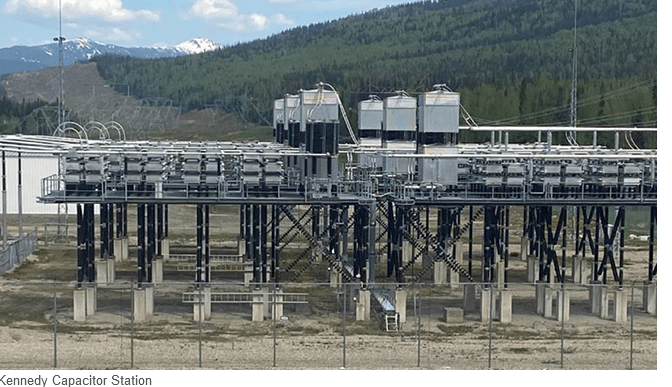I have tried to find this information online, but I can't seem to find a difinitive answer.
In our country we are starting to install quite a few large battery systems to try to cut back on peaker plants, along with many others I assume. I am curious though, at the 100MW+ size installations where there are hundreds of battery units and dozens of inverters, how do they control the power flow?
The BESS I have been working at uses 4 x 4MWhr/2MW battery units feeding into 1 4MW inverter (Power Electronics PCSM 33kV), lots of which are joined together and then fed into a stepup transformer feeding directly into the grid. Everything in the installation makes sense to me (a non engineer, electrician only) except I can't get an answer on how the inverters control the power flow to either charge or discharge the batteries.
Do the inverters simply raise or lower the voltage to above or below the grid volts? Or is it a very slight frequency or power factor shift?
This isn't a critical question, it's just curiosity on my part. If anyone can help educate an ignorant sparky I would be very appreciative.
Thanks guys/girls.
In our country we are starting to install quite a few large battery systems to try to cut back on peaker plants, along with many others I assume. I am curious though, at the 100MW+ size installations where there are hundreds of battery units and dozens of inverters, how do they control the power flow?
The BESS I have been working at uses 4 x 4MWhr/2MW battery units feeding into 1 4MW inverter (Power Electronics PCSM 33kV), lots of which are joined together and then fed into a stepup transformer feeding directly into the grid. Everything in the installation makes sense to me (a non engineer, electrician only) except I can't get an answer on how the inverters control the power flow to either charge or discharge the batteries.
Do the inverters simply raise or lower the voltage to above or below the grid volts? Or is it a very slight frequency or power factor shift?
This isn't a critical question, it's just curiosity on my part. If anyone can help educate an ignorant sparky I would be very appreciative.
Thanks guys/girls.

